The state government Department of Transport (DoT) has released updated speed zoning policy, failing to implement Safe System by refusing to include 30 km/h as a standard option.

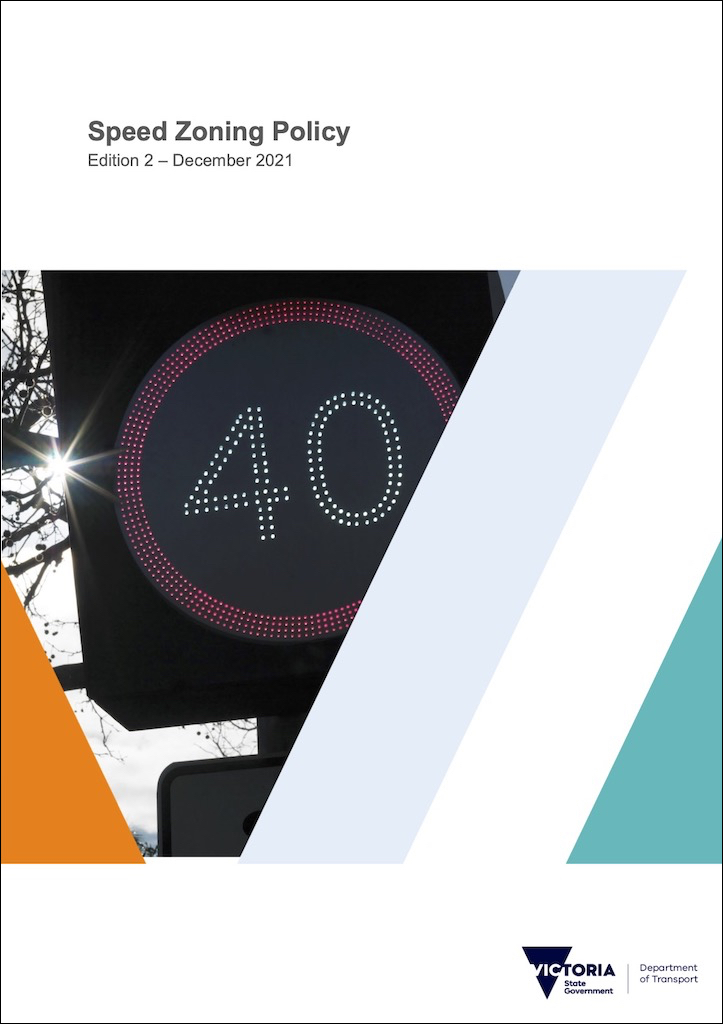
This policy does not reflect best practice, nor does it align with Safe System. 30 km/h is used all across the Netherlands, as well as many other cities around the world, including London, Paris, Madrid, Brussels and Munich.
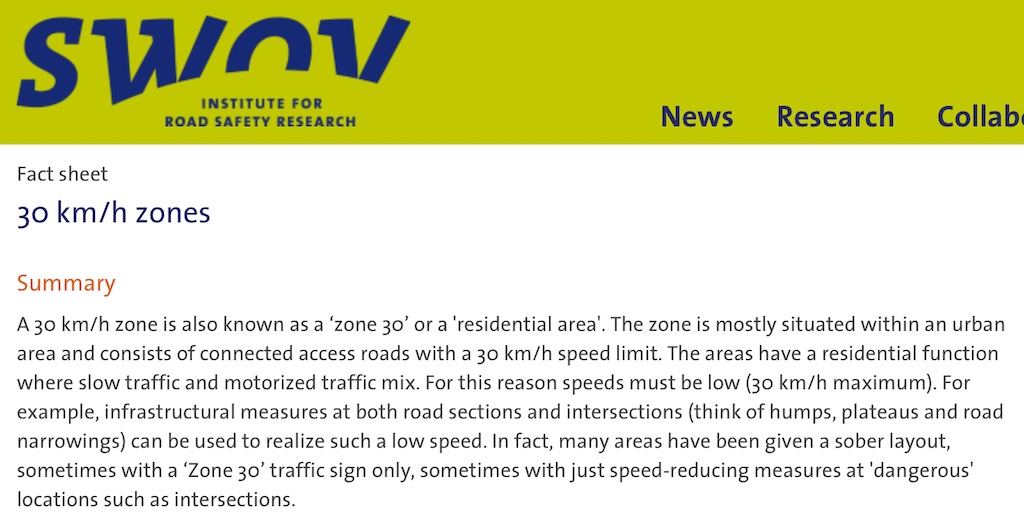
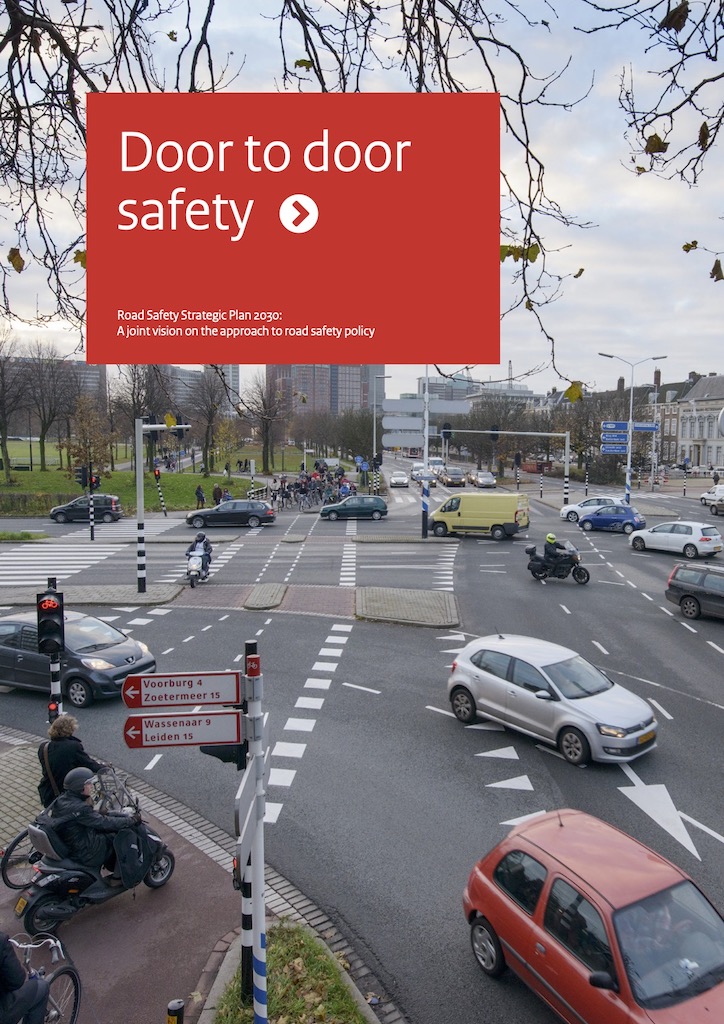
30 km/h was also the focus of the United Nations Road Safety Week in 2021:
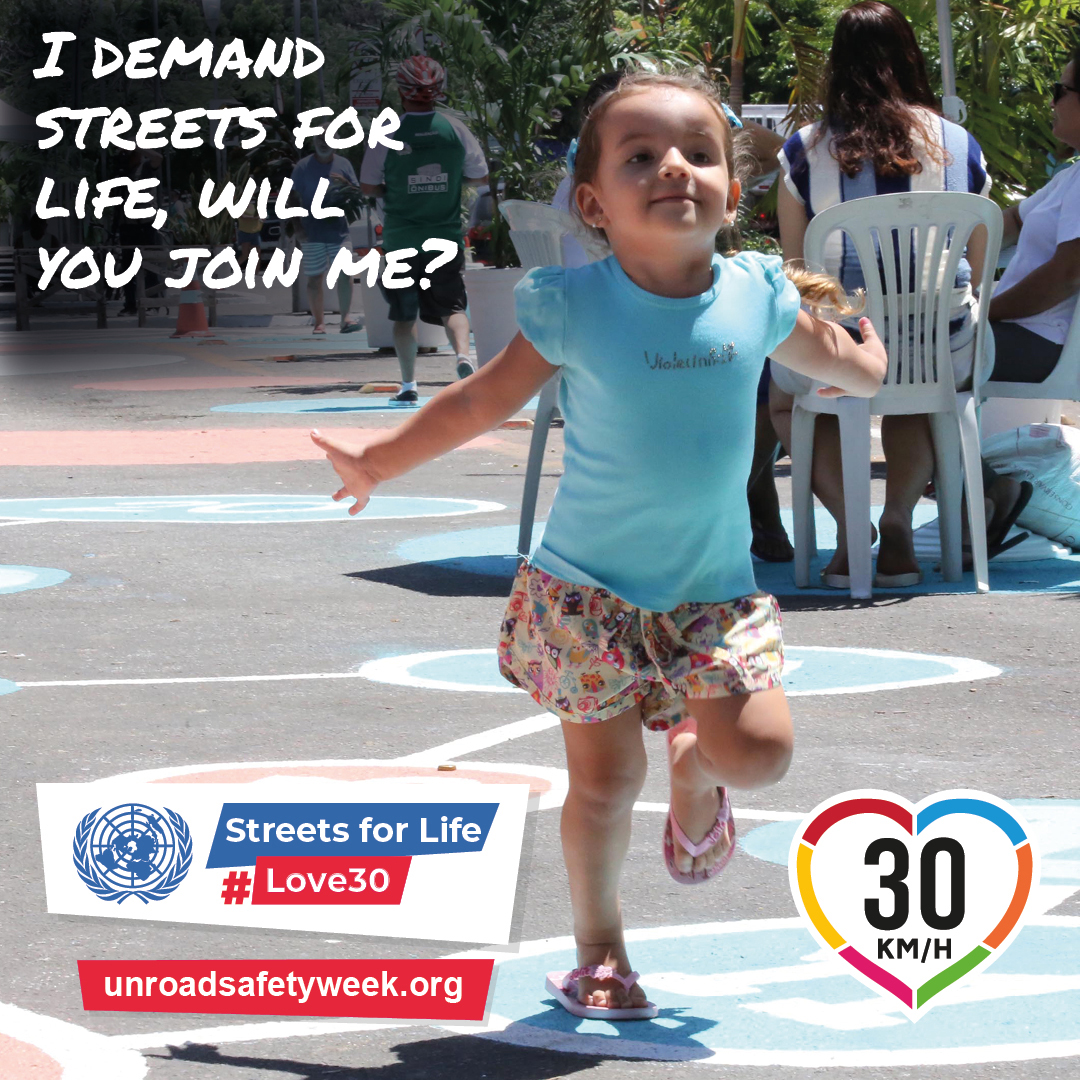
The City of Yarra hosts a trial of a 30 km/h zone, following the success of 30 km/h (or 20 miles per hour) zones in many cities around the world. Additional 30 km/h zones were placed on hold while council awaited an update to the state government speed zoning guidelines, with the expectation that 30 km/h would become a standard option that inner-city councils could select.
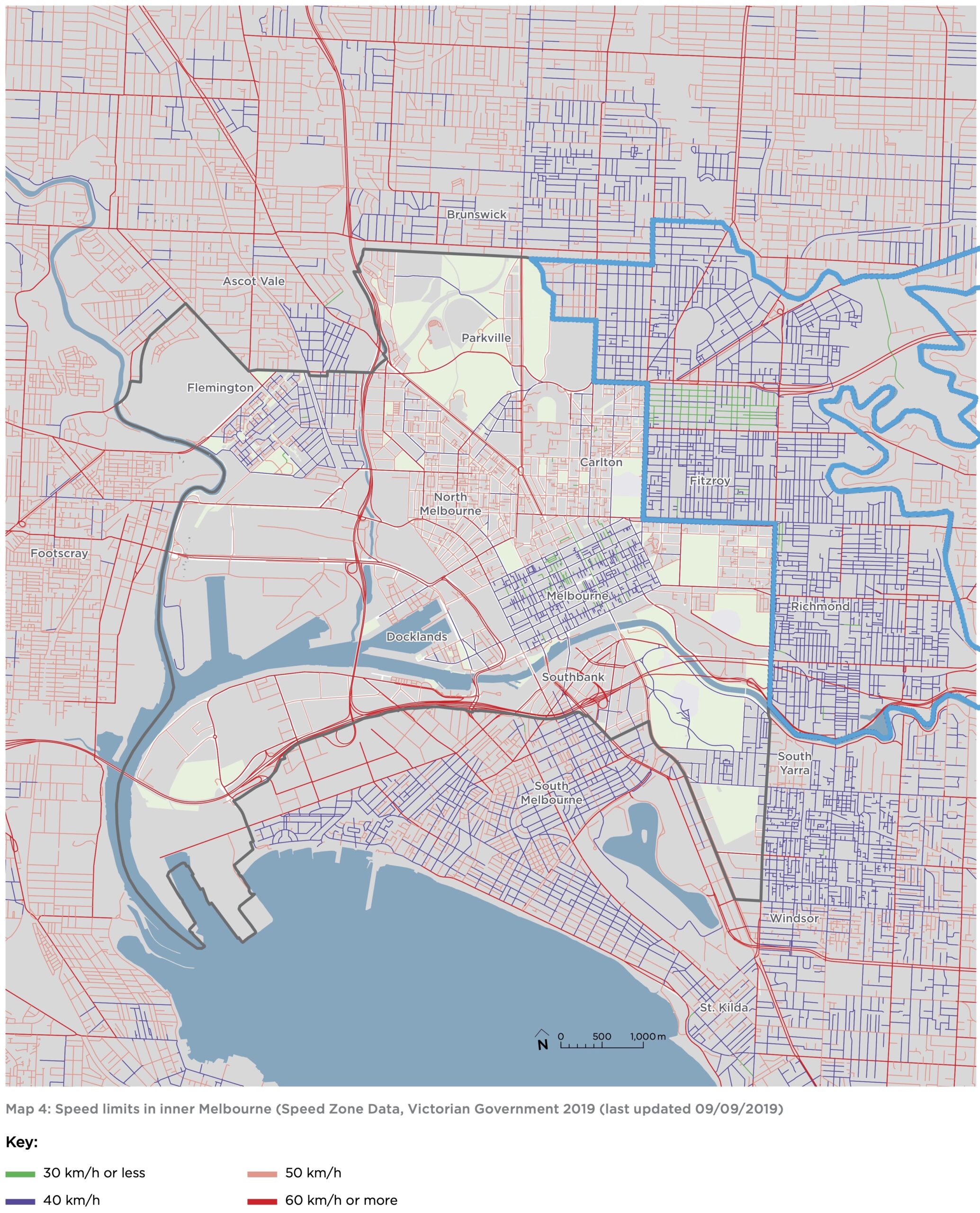
Theupdated speed zoning policy starts off well, mentioning 30 km/h, and pointing out that if separation (protected bike lanes) isn’t possible, then consideration should be given to speed limits:
Vulnerable road users are much more likely to suffer death or serious injuries at impact speeds above 30 km/h and fatal injuries at speed exceeding 40 km/h due to a lack of protection in the event of a collision. Ideally, facilities should be provided to separate vulnerable road users from traffic, particularly on arterial roads where vehicle volumes and speeds are higher. However, this is not always practical or possible. It is therefore essential that sufficient consideration is given to vulnerable road users when setting speed limits.
Speed Zoning Policy December 2021
Even better, the policy claims to support active transport modes and amenity for local residents:
Speed limits should be set at a level that supports active transport modes and minimises impacts on amenity. Fundamental to the Movement and Place philosophy is recognising that streets perform multiple functions. Transport links not only move people from A to B, they also serve as key places and destinations in their own right. Local streets that do not provide a through traffic function generally have low volumes of traffic. In these instances, speed limits should be set at a level to enhance amenity and encourage an increased use of active transport modes.
Speed Zoning Policy December 2021
However, the updated speed zoning guidelines offer tired, old, out of date excuses for failing to support 30 km/h, highlighting “network efficiency”, “overall delay”, and “road user expectation”. 30 km/h is defined as requiring “special approval” for “exceptional circumstances”. This is pathetic.
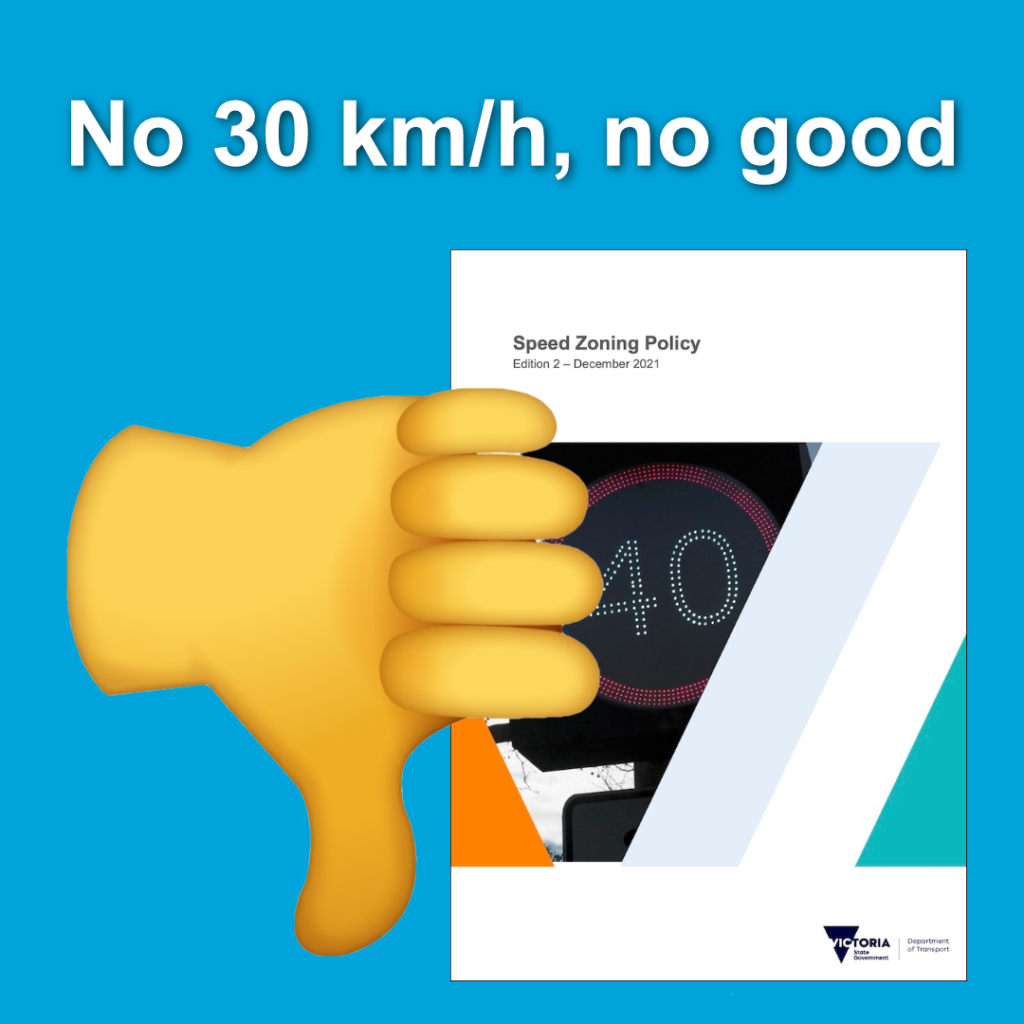
The State Government and the Department of Transport should:
- Support 30 km/h as a Safe System solution
- Allow councils to choose 30 km/h for their neighbourhoods
- Fund infrastructure to calm traffic on neighbourhood streets, such as kerb outstands, street trees, slow points, wombat crossings, chicanes, and modal filters.
Overall, such support would make our streets, neighbourhoods and city better for everyone, including drivers.
Published 12th January 2022.
